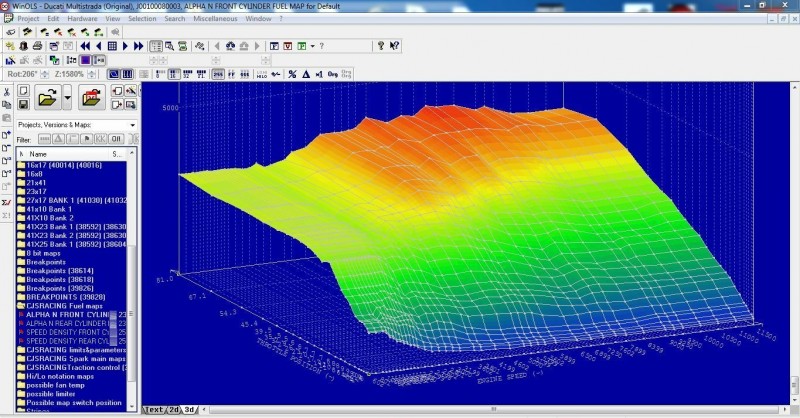High Quality Chiptuning File Service Dyno 24/7 Support
High Quality Chiptuning File Service Dyno 24/7 Support
Blog Article
When it comes to optimizing vehicle performance, dyno chiptuning files stand out as an indispensable tool for automotive enthusiasts and professionals alike. These files, tailored to specific vehicle models, enable the fine-tuning of an engine’s electronic control unit (ECU), offering unparalleled improvements in power, efficiency, and driving experience. This article explores the key aspects of dyno chiptuning files, their benefits, and considerations for enthusiasts looking to enhance their vehicle's performance.
What Are Dyno Chiptuning Files?

Dyno chiptuning files are specially developed software files used to modify a vehicle’s ECU settings. The ECU, often referred to as the brain of the car, controls crucial engine parameters such as fuel injection, ignition timing, turbocharging, and more. By altering these parameters, chiptuning files optimize the engine's performance for increased power output, improved fuel economy, and a better driving experience.
These files are created based on data collected from a dynamometer (or "dyno") – a device that measures a vehicle's power output under simulated driving conditions. The dyno provides precise readings of horsepower, torque, and other performance metrics, allowing tuners to craft custom ECU maps tailored to each vehicle’s specific needs.
Benefits of Dyno Chiptuning Files
- Enhanced Power and Torque
Dyno chiptuning files are designed to maximize engine power and torque. By optimizing parameters like air-to-fuel ratios and turbo pressure, these files can significantly increase a vehicle's performance, making it more responsive and dynamic on the road. - Improved Fuel Efficiency
Contrary to the belief that tuning focuses solely on power, many dyno chiptuning files aim to enhance fuel economy as well. By fine-tuning the ECU for efficient combustion, drivers can achieve better mileage without compromising performance. - Tailored to Individual Vehicles
Generic tuning solutions may not account for unique variations in vehicle condition or driving preferences. Dyno-tuned files, however, are customized to each vehicle, ensuring optimal results tailored to individual needs. - Smooth and Reliable Performance
Professionally developed dyno chiptuning files prioritize reliability alongside performance. By ensuring that engine components operate within safe limits, they reduce the risk of mechanical failures or excessive wear and tear. - Unlock Hidden Potential
Most modern vehicles are equipped with ECUs programmed conservatively to meet regulatory and environmental requirements. Dyno chiptuning files unleash the engine's true potential by removing these restrictions.
Key Considerations Before Opting for Dyno Chiptuning
While the advantages of dyno chiptuning are compelling, there are crucial factors to consider:
- Professional Expertise
The quality of a dyno chiptuning file depends heavily on the expertise of the tuner. Working with a reputable tuning service ensures that the file is developed using accurate dyno data and tested rigorously for safety and performance. - Vehicle Condition
Before undergoing tuning, it’s essential to ensure the vehicle is in good mechanical condition. Worn-out components or existing issues can affect tuning results and may even lead to engine damage. - Compliance with Regulations
In some regions, modifications to the ECU may be subject to legal restrictions or emissions standards. Vehicle owners should ensure that their tuning adheres to local regulations to avoid penalties. - Warranty Considerations
Modifying the ECU may void the manufacturer’s warranty. Vehicle owners should weigh the benefits of tuning against the potential loss of warranty coverage. - Long-Term Maintenance
Tuning often increases stress on engine components. Regular maintenance and monitoring are crucial to ensure longevity and consistent performance.
How Dyno Chiptuning Works
The process of dyno chiptuning involves several key steps:
- Baseline Measurement
The vehicle is placed on a dynamometer to measure its current performance metrics, including horsepower and torque. - File Development
Based on the baseline data, tuners create a custom ECU map, adjusting parameters to achieve the desired performance goals. - Testing and Fine-Tuning
The new file is uploaded to the ECU, and the vehicle undergoes further testing on the dyno to fine-tune the adjustments. - Implementation and Validation
Once the tuning is finalized, the file is permanently installed, and the vehicle is tested on the road to ensure optimal performance under real-world conditions.
Popular Applications of Dyno Chiptuning
Dyno chiptuning files are used across various applications, including:
- Performance Cars: Enhancing speed and acceleration for track or spirited driving.
- Commercial Vehicles: Improving fuel efficiency and torque for heavy-duty applications.
- Daily Drivers: Balancing power and economy for an improved driving experience.
- Off-Road Vehicles: Optimizing torque and throttle response for challenging terrains.
Choosing the Right Dyno Chiptuning Service
When selecting a tuning service, consider the following:
- Reputation and Reviews: Look for a provider with a proven track record and positive customer feedback.
- Experience: Ensure the service specializes in your vehicle make and model.
- Transparency: A reliable tuner should provide clear explanations of the tuning process and expected results.
- Support: Post-tuning support is essential to address any concerns or adjustments needed after installation.
Conclusion
Dyno chiptuning files represent a cutting-edge solution for vehicle performance optimization. By customizing ECU settings based on precise dyno data, these files unlock significant gains in power, efficiency, and driving enjoyment. However, achieving the best results requires working with experienced professionals and ensuring the vehicle is well-maintained. For automotive enthusiasts seeking to elevate their driving experience, dyno chiptuning offers a world of possibilities. Report this page